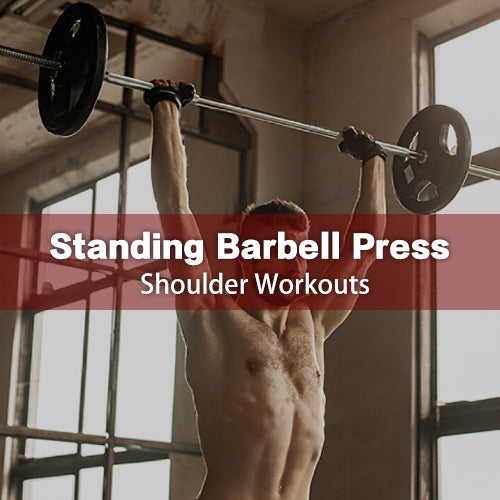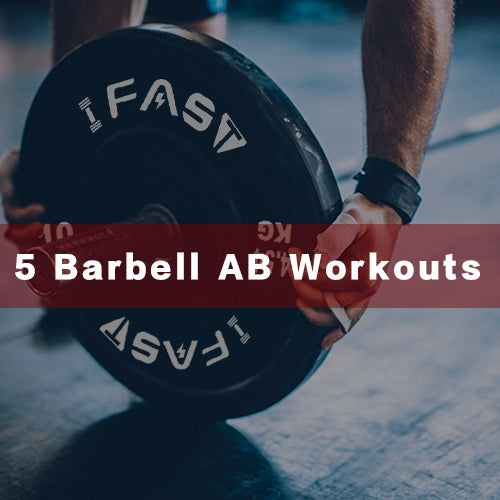Everyone has different sports foundations and sports abilities, as well as physical fitness and the amount of exercise they need. For example, if you let a 300-pound fat man run every day, it would be strange if his knees don’t go to waste. No one exercise program fits everyone. So this article will only talk about the basic knowledge of exercise and the idea of fat loss exercise, and then make a plan for yourself because only the one that suits you is the best!
👀 Read this article and you'll know:
- The basis of exercise for fat loss
- The basics of strength training
- The basics of aerobic training
- Fat loss training ideas
- Weight Loss Diet Plan
- How to start the road to fat loss
So, without wasting any further time, let's get into the article.
1.The basis of exercise for fat loss
Let’s move out the formula for fat loss first: basal metabolism + exercise consumption > total calorie intake; first of all, let’s understand a misunderstanding, that is, many people think that losing weight means losing weight, and you have to go on the scale every day to see if you are heavy or light Use this to judge whether you are fat or thin.
We are here to tell you very responsibly: the number of body weight has no meaning for judging fat or thin, lightweight does not mean thin, and heavyweight does not mean fat.
Why is this? A picture can answer your doubts

First of all, this picture must be exaggerated, but because of the different densities of fat and muscle, there is a big difference in volume. Some people look fat, but their weight may not be very heavy, because their body fat content accounts for more; some people look thin, but their weight is larger because he has more muscle content.
Therefore, we can conclude that the fat rate (fat weight/weight) is the criterion for judging fat and thin. If we want to lose weight, the goal should be to lose fat content, not muscle content.
Why can't I lose muscle mass?
Or move out the formula first: Basal Metabolism + Exercise Consumption > Total Calorie Intake;
Because the greater the muscle content, the greater the body's basal metabolism, and the muscle content is almost the only factor that can affect the basal metabolism. We can increase exercise consumption through exercise, but it is difficult to increase basal metabolism in other ways besides muscle content. to change it.
Therefore, the core idea I want to convey in the part of fat loss exercise is: to reduce the fat content to the greatest extent while keeping muscle loss as little as possible.
So how to exercise can not only ensure muscle content but also reduce fat content?

To ensure muscle content, we must do strength exercises, and to reduce fat content more, we must do aerobic exercises. Therefore, our exercise method must be a combination of strength training + aerobic training.
2.The basics of strength training
Many people, including those who have been exercising for a long time, have a misunderstanding. They equate strength training with anaerobic exercise. You say that you are an 80kg strong man, and you use a 2.5kg small dumbbell to do push-up exercises. Tell me you Doing anaerobic exercise, I think you're kidding me.
So, let’s first talk about what aerobic and anaerobic exercises are.
Aerobic exercise: Refers to exercises that focus on muscle endurance and cardiopulmonary function training. This type of exercise is generally relatively light in intensity and can often last for a long time, such as running, skipping rope, swimming, etc.
🏋♂IFAST has a lot of fitness equipment for you to lose weight successfully !


🔥 Shop👉exercise bike Shop👉Ropeless jump
Anaerobic exercise: Refers to exercises that focus on changes in body strength and circumference. This type of exercise is generally very intense and lasts for a very short time, about 1 minute, such as large-volume bench presses, pull-ups, squats, deadlifts, etc.
Therefore, the strength training I am talking about here refers specifically to training that reaches the level of anaerobic exercise.
Here are a few more concepts that you may see in other training programs.


Shop👉Dumbbell with bench Shop👉Trap bar with plates
Strength training volume: Training volume measures the degree of your exercise consumption. There are many ways to measure it. It can be measured by the total number of training groups and the total number of movements.
Strength training intensity: Training intensity reflects the difficulty of your exercise. Similarly, when you are exhausted, the greater the weight used, the greater the intensity.
RM: This is often seen in many schedules, such as 10kg*10rm, many people will simply understand it as 10 times, here are 10 times, but RM refers to a certain number of exhausted times and the corresponding weight, such as you Take a 10kg dumbbell to do the bench press. When you do the 10th rep and you can’t do the 11th rep with all your strength, it’s called 10kg*10rm.
3.The basics of aerobic training
The process of the human body consuming fat is to send fat into the mitochondria of cells for decomposition to give body functions. If we want to consume more fat more effectively, we need the density and volume of mitochondria to be large enough.
So how can we increase the density and volume of mitochondria?
Just do low-to-medium-intensity cardio.
What is low-to-moderate-intensity cardio?
It means that you can barely finish a sentence while you are doing it. You can do a test yourself while doing aerobic exercise and say "I hope I have a good figure". Breathe, otherwise, you will suffocate, that level is right; if you can still sing a song after saying this sentence, then you are lying to yourself with this intensity; or you feel that you are about to suffocate after only three words, that is overkill.
How long should you do aerobic training?
A single aerobic training time is recommended to be at least 15 minutes. Friends who have no exercise habits should develop exercise habits first, and then increase to 30-40-50-60 minutes as appropriate according to their level, and no more than 60 minutes.
There is also a misunderstanding here, that is, many people think that the body starts to consume fat after 30 minutes of aerobic exercise, including many ignorant coaches who teach students this way, which is an extremely wrong idea.
As long as you start exercising, carbohydrates, protein, and fat in your body will start to provide energy at the same time, but the proportions of each period and part are different. You can only say that in the early stage of the exercise, carbohydrates provide the most energy, and later carbohydrates are used up, and protein The proportion of energy supplied by fat and fat will increase.
What kind of aerobic training methods are there?
Common aerobic training methods include constant-rate aerobic training and circuit training.
Constant-speed cardio, such as running, rowing machine, cycling, skipping rope, swimming, etc.

Circuit training, the intensity of circuit training is generally higher than that of constant-speed aerobic. Many HIIT courses on fitness apps belong to circuit training or reducing the weight to a minimum in strength training, and do a combination of bench press, deadlift, and squat circular movement.
We recommend a combination of constant speed aerobic and circuit training, which can keep the fun of aerobic training. Running all the time is very boring, and it is difficult to persist.
4.Fat loss training ideas
Core idea: It is a combination of strength training and aerobic cloud training. The best way is to do 15-40 minutes of aerobic training after strength training. The aerobic training time should be appropriately increased according to body feedback, such as a period of exercise After 15 minutes of aerobic training, I feel that I have entered a bottleneck period and I can’t lose weight. At this time, try increasing it to 30 minutes.
The core operation to ensure muscle loss is to reduce the amount of strength training, keep the intensity of strength training unchanged, and gradually increase the intensity of aerobic training. Reducing the amount of training is to reduce the total number of sets or times of strength training, but at the same time make sure that the weight you use cannot be reduced, because once the weight is reduced, the muscle mass will also be lost.
What should a fitness novice do?
If you are a novice without any exercise and fitness plan before, first of all, please seriously start to develop your strength training and aerobic training plan, start with the simplest one, to develop good exercise habits.

For example, if you are training at home, you can download fitness apps, find strength training courses in the course library, such as home chest training, back training, leg training, and other courses, arrange a strength training course every day, and then do something useful Aerobic training, aerobic training can also follow the courses on the app, but remember the points I said above.
What do entry-level trainers do?
If you have gym training experience in the past and can go to the gym for training, I suggest you spend a week first, follow your previous strength training plan, and record the training volume and training intensity of your training, such as bench press 10kg *10rm*4 groups, then when entering the fat loss training period, the bench press action can be adjusted to 10kg*10rm*3 groups or 10kg*8*4 groups, but the maximum weight should not be changed. After the strength training is done, do the aerobic training.
5.Weight Loss Diet Plan

The essence of food is protein, carbohydrates, and fat:
- Fat loss is a calorie game, basal metabolism + exercise consumption> total calorie intake --> weight loss; otherwise gain weight;
- Dietary calorie intake = basal metabolism * exercise coefficient * fat loss rate; the less exercise the smaller the exercise coefficient; the smaller the fat loss rate, the larger the calorie gap and the faster the fat loss rate;
- Fat loss requires a reasonable distribution of protein, carbohydrates, and fat ratios. Male gods recommend protein: carbohydrates: fat = 4:4:2, goddesses recommend protein: carbohydrates: fat = 3:4:3
6.How to start the road to fat loss
For fat loss exercise, those who have experience in strength training should reduce the amount of training and maintain the intensity of training. For those who have no experience in strength training, start to add strength training. After strength training, continue to do aerobic training. From a short time, gradually increase Training time and intensity, after each exercise, you can use the software to count the approximate calorie consumption, or use a sports bracelet or watch to record the calorie consumption.

Fat-reducing diet, according to the recorded data and your basal metabolism, see if you meet the fat-reducing formula every day: basal metabolism + exercise consumption > total calorie intake, if not satisfied, what adjustments are needed?
Finally, I said that weight is meaningless at the beginning. I have to take pictures every day to record my body posture and use a body fat scale to continuously monitor body fat. Summarize once a week to see the changes in body fat percentage. If there is no change, the body fat percentage is still there Ascent, it is necessary to reflect on the record, where it is not done well, and where it needs to be improved, such as increasing the amount of exercise, reducing intake, etc.
If you not only want to lose weight, but also want to exercise systematically in the future, IFAST has prepared your exclusive gym for you to exercise at home anytime
IFAST Home Gym Package
Shop Now👉here




